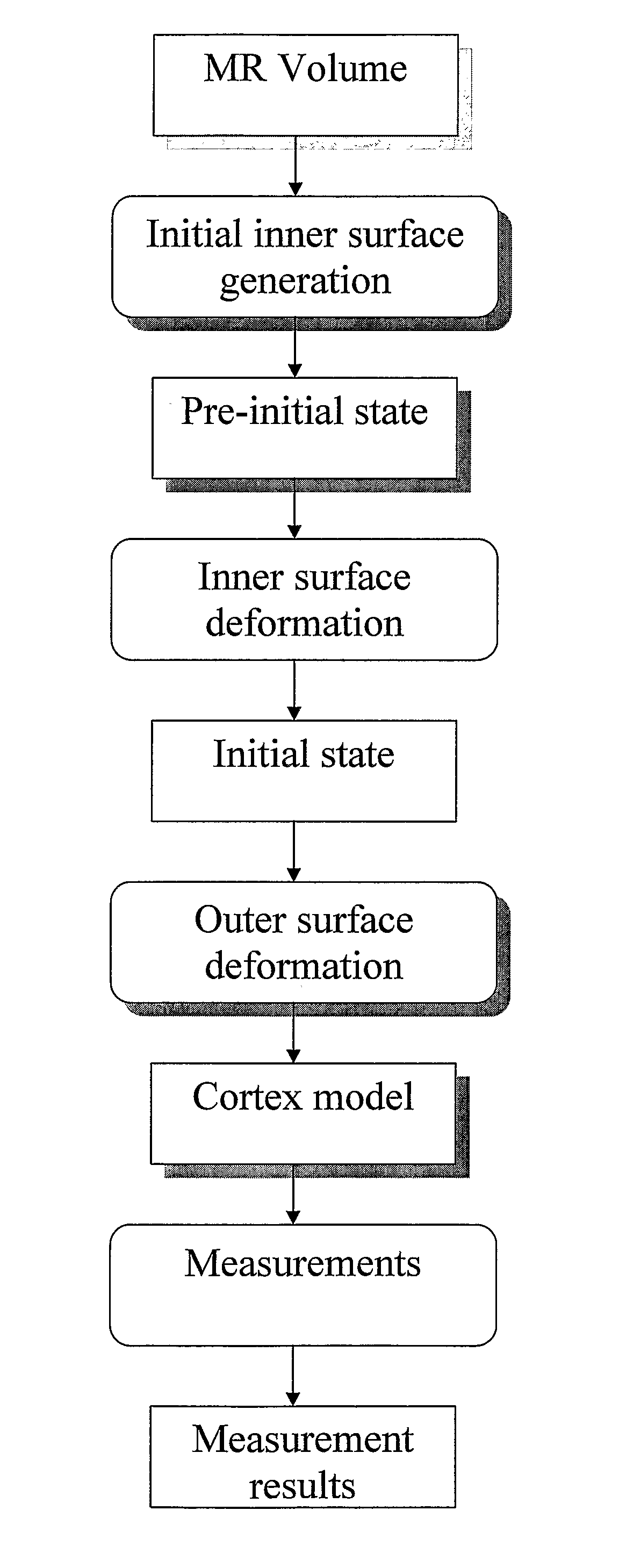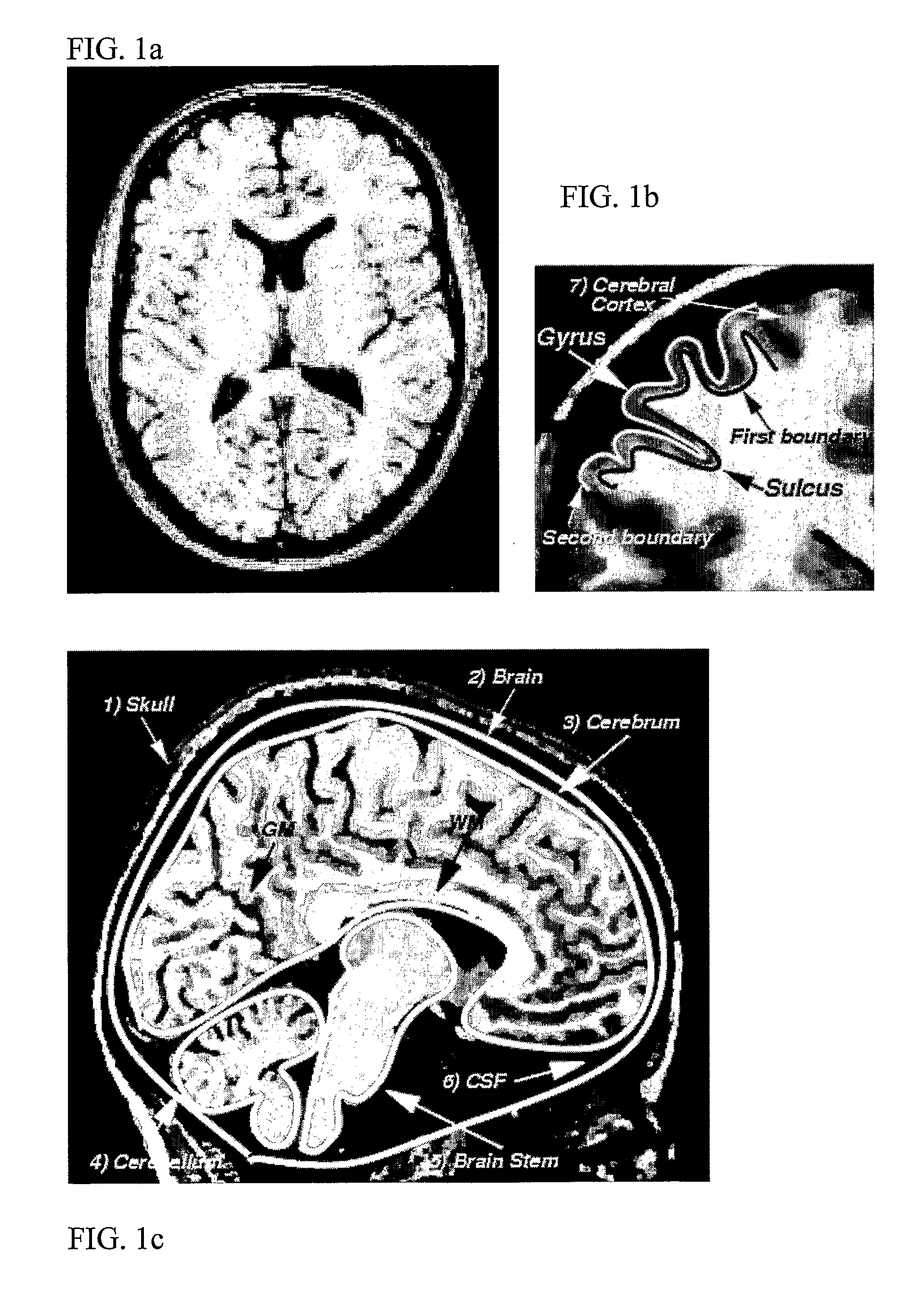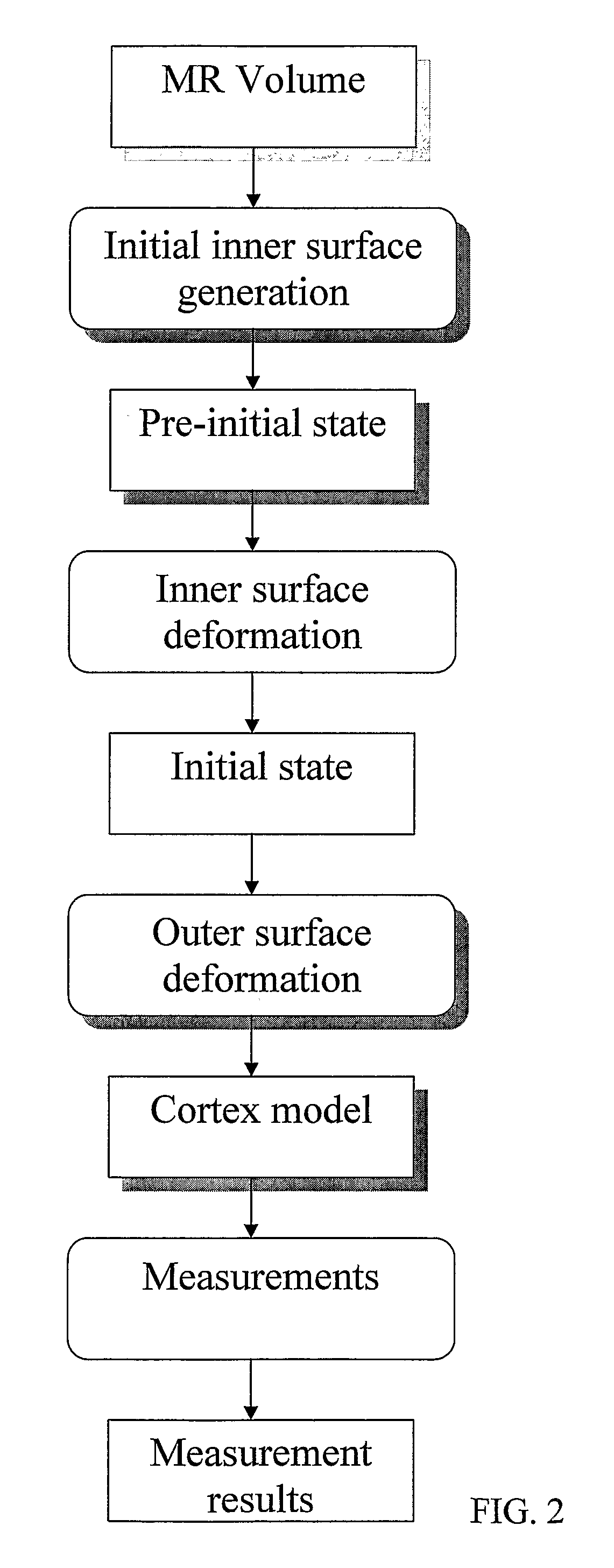Computerised cortex boundary extraction from MR images
a computerised cortex and boundary extraction technology, applied in image enhancement, instruments, nuclear engineering, etc., can solve the problem of poor approximation of the second boundary not very far into the tight fold, and achieve the effect of high degree of certainty, high complexity and reliable reconstruction
- Summary
- Abstract
- Description
- Claims
- Application Information
AI Technical Summary
Benefits of technology
Problems solved by technology
Method used
Image
Examples
Embodiment Construction
[0057]The method according to the invention can be used as a general method for extraction of contours from images, for example from grey scale images with object contours having blurry and / or faint borderlines. However, as an example, the method according to the invention will be explained in detail for the extraction of the cerebral cortex from sets of magnetic resonance (MR) images. It is assumed that images have been taken with MR as slices of a three dimensional volume containing the brain of a human being. The applied set of images in the form of digitised data will be termed MR volume in the following.
[0058]FIG. 1 illustrates dataset from an MR volume in the form of digitised images that show slices of a brain taken at different angles (transversal and sagittal) of a human being. The images show with highlight of roughly approximated boundaries the surrounding skull 1, inside which the brain 2, comprising the cerebrum 3, the cerebellum 4 and the brain stem 5, is embedded in a...
PUM
 Login to View More
Login to View More Abstract
Description
Claims
Application Information
 Login to View More
Login to View More - R&D
- Intellectual Property
- Life Sciences
- Materials
- Tech Scout
- Unparalleled Data Quality
- Higher Quality Content
- 60% Fewer Hallucinations
Browse by: Latest US Patents, China's latest patents, Technical Efficacy Thesaurus, Application Domain, Technology Topic, Popular Technical Reports.
© 2025 PatSnap. All rights reserved.Legal|Privacy policy|Modern Slavery Act Transparency Statement|Sitemap|About US| Contact US: help@patsnap.com



